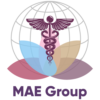
You’ve created a marketable and perhaps lifesaving device. Now it’s time to get your product to market. That requires understanding of a host of regulations and standards that apply to your specification device and desired market, be that the USA, Canada, or any specific market. As such, understanding the role of the regulatory specialist and key elements is essential.
Understanding the FDA
First, remember that the FDA is responsible for keeping the public safe. They are responsible for regulating the production and monitoring the safety and effectiveness of medical devices and pharmaceuticals sold in the United States.
So before your medical device can be sold in the U.S, you must obtain approval from the FDA (for many types of devices) or at least register your company with them (for many devices that are of less significant risk to users—more on that later). If you desire to sell your product outside the U.S., you’ll have similar regulations and procedures to follow that are established by the regulatory bodies of those countries.
Finally, there are specific and ever-changing regulations depending upon the working parts of your medical device and where and how it interacts with the human body. For example, adhesives used on human skin have their own set of regulatory requirements, as do electrically powered devices, implantable devices, devices intended for home use, and so on.
It is a regulatory specialists’ job to help you understand and meet the most current requirements or regulatory controls for your unique medical device. Throughout the entire product development life cycle, a regulatory specialist helps you to ensure your medical device’s safety and effectiveness staying abreast of current standards.
With expertise and an in-depth understanding of FDA requirements and published guidance, specialists help you through all the steps from pre-market approval to keeping your device safely on the market through post-market surveillance. In executing those responsibilities, those specialists must completely understand three key elements of any device:
Key 1: Device Class
Key 1: Device Class. There are three device classes with the FDA regulation of the medical device industry.
Class I devices pose low to moderate risk of harm, are typically simple in design and usually subject to general controls with some exceptions and make up 47 percent of U.S. medical devices.
Class II devices are more complex, pose a moderate to high risk and are therefore subject to both general and special controls, making up 43 percent of all U.S. medical devices. The FDA has provided “Special controls” like performance standards for the device, post-market surveillance, special labeling requirements, and premarket data requirements. Most Class II devices require Premarket Notification–510(k) clearance–before marketing the device in the United States.
Class III are high-risk and usually sustain or support life, are implantable or pose a potential unreasonable risk of illness or injury, and make up the remaining 10 percent of medical devices. Such devices require a Premarket Approval before marketing in the United States, which must demonstrate valid scientific evidence from clinical trials that the device is safe and effective for its intended use and design.
Other markets have similar classification systems for medical devices—often more than the three classes the FDA uses. Knowing what markets and what class within that market’s regulatory body system is vital for entry into any market.
Key 2: Premarket Information
Key 2: Premarket information. Depending upon your device class and your intended market, you need to get premarket clearance or approval (as summarized above). It the job of the regulatory specialist to determine what information and evidence will be needed, including the specific documentation and reporting to get your particular medical device approved for market by the FDA or other regulatory body.
For example, many (but not all) Class I devices are exempt from the Premarket Notification 510(k) requirement. However, most Class II devices require a 510(k), plus many other forms of documentation about the performance and safety of the device. Much of that information takes both money and time to acquire, and a knowledgeable regulatory specialist can save your project unnecessary delay and expense.
Key 3: Post-Market Monitoring
Key 3: Post-Market Monitoring. After you are cleared or approved to sell in a given market, you can expect regular and routine inspections (and enforcement, if problems are found) by regulatory agencies. Throughout the life of your device, a regulatory specialist conducts or assists with internal assessments to ensure you are continually meeting all the requirements for your specific device. Those internal assessments will ensure you have no surprises—or unexpected expenses like fines–when the external regulators arrive and make their reports.
It’s the job of the FDA and similar agencies to ensure the safety and health of individuals when using medical devices or pharmaceuticals. Standards across the globe are put into place for the myriad of manufactured medical and biopharma products to aide, and not harm, the healing and recovery of the human body. Align early and often with a regulatory specialist to know exactly how to get your device into the market and keep it there in the most cost-effective way possible.
To learn more, contact MAE Group.


